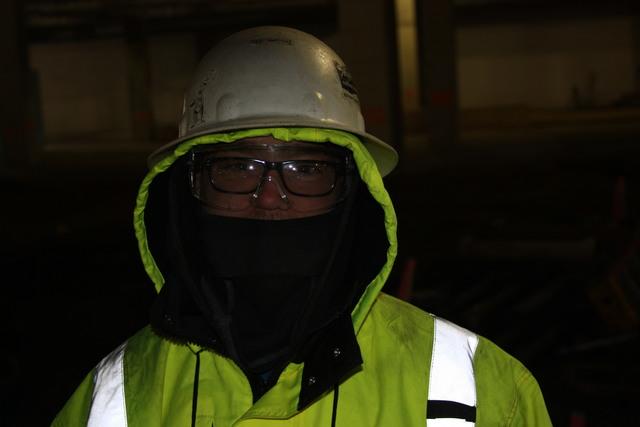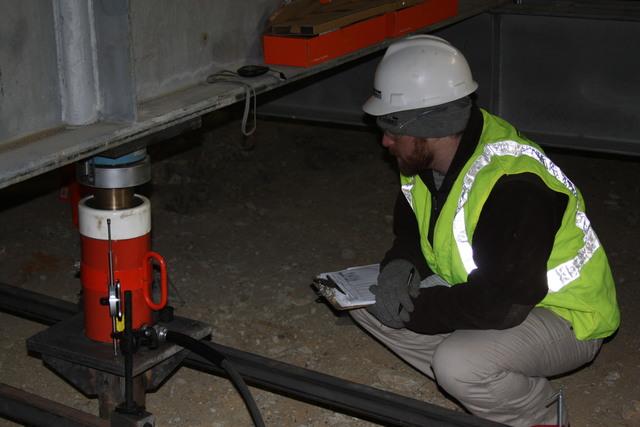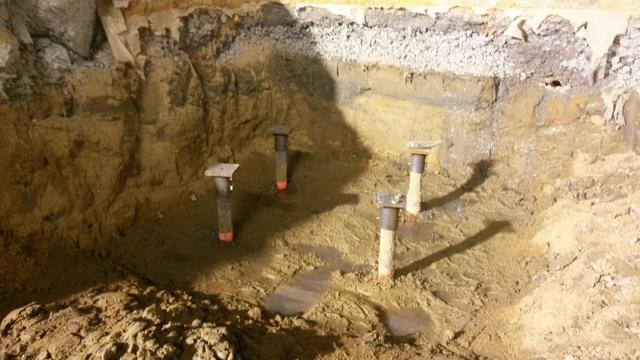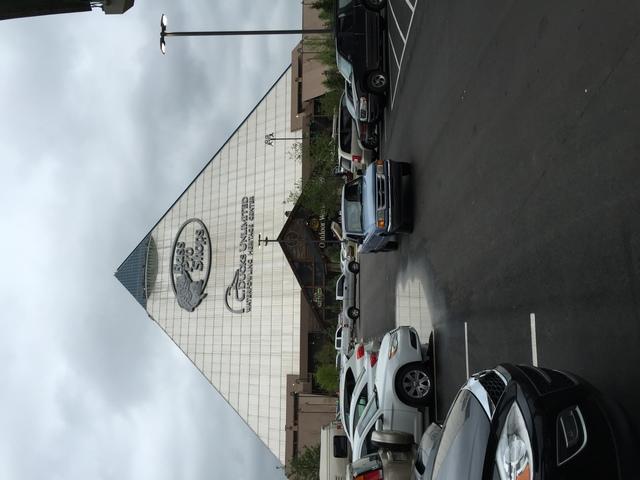The Pyramid/Bass Pro Shops
Challenge
As most people in the Tri-State (Tennessee, Arkansas, Mississippi) area know, Bass Pro Shops and the City of Memphis reached a 55 year lease agreement after 5 years of negotiations with plans to create the world's largest Bass Pro Shops. The Pyramid, a fixture in the downtown Memphis skyline, was originally built in 1991 along the Mississippi River. It is 321 feet (98m, about 32 stories) tall and has base sides of 591 ft; it is by some measures the sixth largest pyramid in the world. It is taller than the Statue of Liberty! Click here for more info related to the history of The Pyramid.
The Pyramid was formerly a 20,000+ seat arena that served as the home of The University of Memphis men's basketball team and additionally hosted many concerts and events. The former use helps us understand what challenges are present in turning The Pyramid into the new vision created by Bass Pro Shops. If you envision the previous arena, you essentially have the shell of the building with just a wide open arena floor. The most weight it ever held inside was the weight of concert staging and things like it. The vision of Bass Bro Shops includes creating a hotel, a restaurant, multiple shops, and even a body of water all inside of the structure. Each of these creates a unique set of requirements in terms of the weight that has to be carried. It makes that former arena floor seem so simple now! As is, the soil simply cannot bear the weight of what will be build inside, and thus, very detailed solutions are needed.
Solution
Redeemers Group was selected through an open bid format in which several companies submitted private bids for the helical pier aspect of the contract. Ultimately we were chosen because we could deliver the quickest installation, and our pricing was competitive. Once the contract was awarded to Redeemers Group, the process began with several meetings between our geotechnical engineers at Foundation Supportworks with the design engineers at Bass Pro Shops to come up with a plan. When the plan was in place, a surveying company started by taking soil borings (samples), and created a geo technical survey. This basically just outlines what the soil is like from surface level down to 90 feet below the surface. Because of that information, we then knew what the weight bearing capacity of the soil was. Therefore, we were able to determine how many piers were needed and at what depths they would be needed. As a side note, we had already determined at this point in the process that our helical piers would give the best results and would be the most economical solution. CLICK HERE for a further look at helical piers: what they look like, and how they do their job.
Next, we identified five test sites inside of The Pyramid, and drilled down test and reaction piers in places relative to where the final production piers would be. Our crew was testing to make sure what had been calculated previously was in fact true. We passed (met and exceeded) all test criteria. Our factor of safety is 2.33. What does this mean? Essentially, whatever they have asked us for, we have exceeded it by a factor of 2.33. If they asked us to drill 10 feet (purely as an example), than we drilled 23 feet.
Click here to view a video of our engineer explaining/showing the testing process..
UPDATE! 2/7/14
We are in week two of in-the-Pyramid work, and the crew has moved on the installing the actual production piers. Redeemers Group will be installing 141 helical piers at various depths to hold the various structures that will be built.
So what happens after the test piers have been driven, the load frame constructed, test run, and deconstructed? The layout of the helical piers is confirmed with the contractor to ensure no confusion for final placements. Stakes are placed exactly on the spot for the new construction piers and we begin our work. These can be seen in the photos- look for the stakes with the pink flags. The first section or "lead" has the 5 blade configuration designed for this job that will essentially guide the other sections straight into and through the different soil strata ultimately ending on competent soil layers.
Once we drive the helical pier into the earth, the top of the section is left exposed approximately 6' above the soil. Each additional lead is either a 10' or 7' section with no additional helix blades. (The first section will have cut the path that all additional sections follow). We disconnect the driver from the driven pier, and lift and seat the next section of pier onto the last. We then connect the next section to the first with 4 bolts that run through the two, and we tighten the components securely together using an air wrench. Because of the height of the pier sections, a crew member then uses a frame ladder to reach the top of the next section. The crew member will help guide the hold configuration for the Eskridge to the top of the next section, and will resume driving the steel downward. An operator directs the machine while a second man watches the pressure gauges notating the depths and pressures attained for records. A third man watches and directs the disconnect and reconnect of the driver. No handheld drivers were used. 5 blade configurations were used starting from 8" going up to 14" that included a "V-style" cut to allow for easier penetration into dense soils.
The 144 helical piers will take approximately 2 weeks to complete with 2 crews- ours at Redeemers Group, and some reinforcements we called in from Vintage Construction, another Foundation Supportworks dealer based in Middle Tennessee. Current talks indicate that the scope of work will likely be expanded beyond the 144 helical piers already identified as being needed.
Keep checking back with us as we update the progress of what is going inside of The Pyramid! It will be an exciting transformation!!!
UPDATE! 2/18/14
See Channel 5 news coverage of the Pyramid project!
Action News 5 - Memphis, Tennessee
UPDATE! 3/4/14
The final helical piers are in the ground at The Pyramid. See pictures at right labeled "Final helical piers in the ground."
An explanation of what happens from here:
The helicals are in the ground, and we have taken pressure measurements to make sure we have met/exceeded the weight requirements. This essentially is measuring how much pressure can be put on them (the helical piers) without them budging. The shaft cap that you can see in the pictures is above the grade of the earth. The contractor had told us how far below the surface they had wanted the caps (the tops of the piers) to be. The contractor will now pour concrete over the caps up to the ground level. Think of the piers as being legs on a table. They transfer the weight down so that you can put a greater load on the surface- the concrete in this case, without it squishing into the earth. Because of the piers are in place, the weight bearing capacity of the structure is far compounded versus just pouring a concrete slab on the ground. The design loads ranged from 15 to 33 kips. To achieve 30kip pile, we used a 20k driver and we came to a differential pressure of 2200 ft. lbs. of torque which creates an ultimate capacity of 100 kips. The ultimate pier capacities, determined by correlation to installation torque, confirmed the initial calculated design capacities and were at least 2.33 times the design load.
Despite encountering temperatures below 10 degrees, finding five sites where embedded rock required removal or pier relocation, and not having piers marked or elevations shot as anticipated, we were able to complete the installation on schedule. The actual installation timeline came in at 20 days: 25 test piers were installed on 5 test sites in 4 days, and 144 final load piers were installed in 15 days.
UPDATE! 3/7/14
We are excited that Bass Pro Shops has been very pleased with our work. As with many design projects, several changes were made to the master design of the Bass Pro store after work had already started. One of those changes involves adding pedestrian bridges inside of the structure (remember that there will actually be a body of water inside The Pyramid!! Woah!). Based on the work we have done thus far, Bass Pro Shops has asked us to install additional helical piers to support these newly planned pedestrian bridges. At this time, we estimate this work will take place in about 45-60 days from now.
4/14/14- KEEP CHECKING BACK WITH US AS WE FOLLOW (AND PARTICIPATE IN) THE PROGRESS AS THE PYRAMID GETS TRANSFORMED IN TO THE LARGEST BASS PRO SHOPS!
7/14/14 UPDATE: Currently, the first wave our our work was completed, and we are sitting back and waiting on other aspects of the project that are not being handled by us to be completed. We will be returning to The Pyramid in August to begin the work that was created after the original scope of work was outline. Based on changes to the overall design, additional support will be needed as previously stated. Check back with us in August as we check back in at The Pyramid!
2/17/15: Since Redeemers Group finished our part of the Bass Pro project, a lot has certainly happened. Once things started coming together inside of The Pyramid, taking pictures of the progress was a no-no. But... the enclosed video that was recently released lets you take a sneak peak inside the structure. You can finally see the progress and can better visualize what all will be included in this project- now being called one of the largest retail spaces in the world. We are excited about our role in stabilizing this structure to allow it to hold the exciting things that you see in this video! Enjoy!
MAY 2015: FINAL UPDATE!!!
BASS PRO OPENED IT'S DOORS ON APRIL 29, 2015 AND IT IS AMAAAAAZING! HERE IS A LOOK INSIDE. YOU HAVE TO SEE IT FOR YOURSELF..
Project Summary
Client: Bass Pro Shops
Structure: The Pyramid in downtown Memphis
Foundation Supervisor: David Pierce
Production Manager: Philip King
Engineer: Jake W. Blessen, E.I.T. , Application Engineer
Supporting Cast: Foundation Supportworks
Supporting Production Cast: Vintage Construction
Product being used: 144 Helical Piers
Something unusual about this case: 5 total helical test sites (which is more than would normally be needed)























